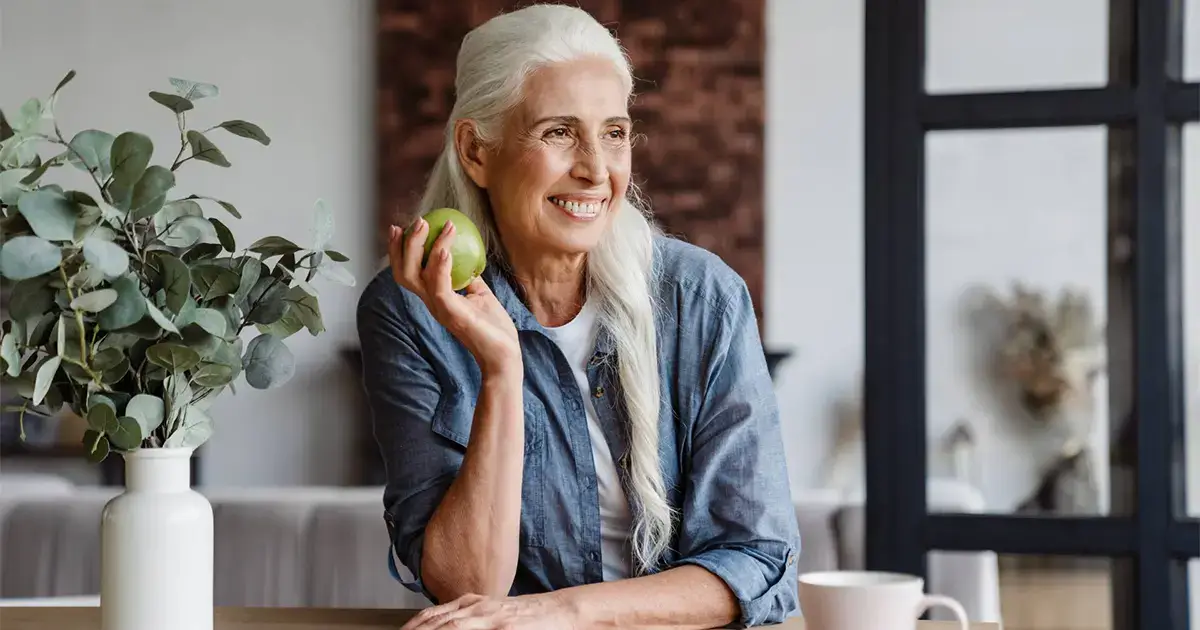
While your food intake may be less as you age, there are still ways to practice healthy eating beyond age 60. It only requires creativity and education for good nutrition, and it’s never too late to learn. In fact, when we learn to eat smart, healthy nutrition can be achieved. And it’s never been easier to craft nutrient-rich plates for seniors.
Often, there is more free time to dedicate to yourself after turning 60. For those who are just starting their healthy food journey, eating healthy will require some letting go of old food habits and adopting new ones.
So, let’s cover the basics of what a nutrient-rich plate consists of for healthy eating after 60. Plus, we will give you inspiration for what to eat for meals.
Does Your Lifestyle Support Healthy Aging?
As the body ages and changes, so do our nutritional needs. But healthy eating beyond age 60 is definitely doable. It only requires maintaining an active and healthy lifestyle is greatly supported by food and daily habits. Ultimately, the goal is to balance wholesome foods with taste to satisfy unique preferences.
While numerous lifestyle habits contribute to happy and healthy aging, diet is among the most important to dial in on. However, before we dive in, it’s important to cover the essential groundwork that also plays a significant role in longevity.
Regular deep sleep, daily exercise, sufficient hydration, and social support are areas of life that shouldn’t be overlooked. These intertwine with your ability to maintain a healthy diet and reap the full benefits. Therefore, be sure to walk daily, be involved in some kind of physical activity that feels fun, drink plenty of water, and sleep undisturbed.
This will make it easier to stick to a healthy diet and live a vibrant life well into your 60s, 70s, 80s, and beyond!
Healthy Eating Beyond Age 60
There are key nutrients aging seniors should be consuming daily that include:
- Protein
- Fiber
- Calcium
- Vitamin D
- Omega-3 Fatty Acids
- Antioxidants
- Potassium
- Vitamin B12
Nutrition & Healthy Aging: Recipe Suggestions
Let’s start with protein on the plate. Choose fatty fish like salmon, trout, herring, sardines, or mackerel. Then you’ll have the omega-3 fatty acids covered while getting sufficient B12. We recommend eating fish 2-3x weekly.
Plant-based protein options such as lentils, beans, tempeh, nuts, and seeds provide various nutrients like fiber, potassium, and antioxidants. For this, we recommend eating a full serving of either lentils or beans, nuts, and seeds daily. Eggs are a great source of protein, vitamin D, calcium, and potassium. They also make wonderful nutrient-packed breakfasts.
Remember that the general rule of thumb – each plate of food should have grains, vegetables, protein, fruits, and dairy. While the required portion may vary for each person, a breakfast plate can include 1-2 eggs, ½ cup of blueberries, and your favorite veggies, plus green tea.
Lunch can be a one-pan salmon with tomatoes and zucchini. Lastly, consider garlicky roasted eggplant with a creamy yogurt sauce for dinner.
A serving of pumpkin seeds or Brazilian nuts can be a healthy in-between snack. These are just some basic examples to get your mouth watering and your mind inspired to learn more about balanced nutrition!
Conclusion
It’s a great pleasure for us at Jane’s Cafe to help aging folks nourish their bodies with adequate nutrition. We aim to make a difference in your health without compromising the quality and taste.
You may also enjoy reading: Creative Juicing Recipes













Leave a Reply